Crassula ovata, commonly known as jade, is a popular house and garden plant. They are relatively easy to raise and feature certain characteristics that are beneficial and health-promoting. We have researched the general requirements of caring for your jade plant.
The primary causes that jade wilt and die are improper watering, root decay, inadequate sunlight exposure, overfertilizing, extreme temperature change, and pest infestation. Water properly, provide plenty of direct sun, keep the area cool and fresh, and use additives to eradicate pests.
In this article, we aim to guide you through the general caring requirements of jade plants, the reason for poor development, and the benefits this succulent has to offer. If you wish to find out more, continue on reading!

Jade: An Overview
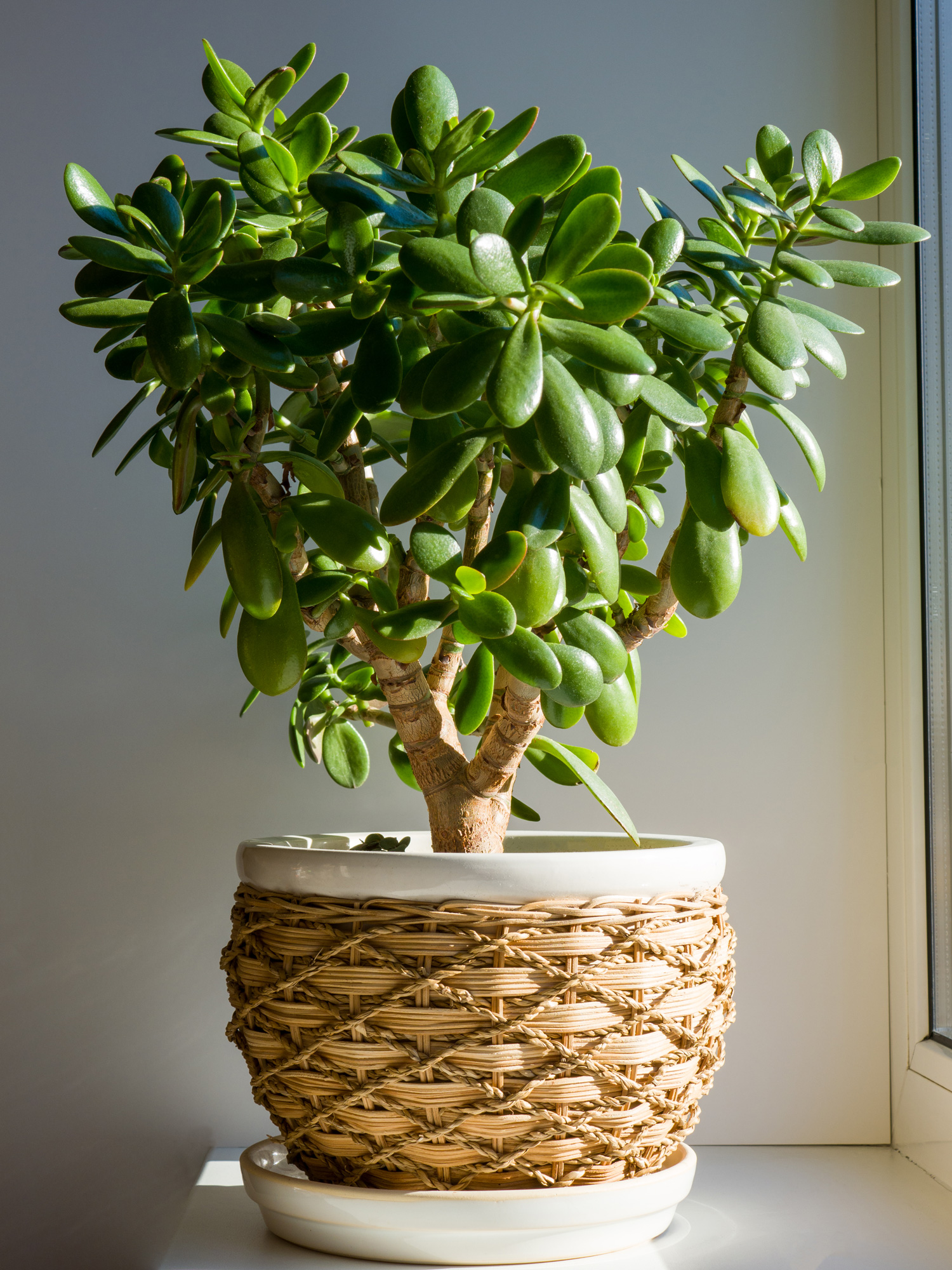
Jade plant, also referred to as Crassula ovata, lucky plant, and money tree is a succulent that blooms with white or pink flowers and is a native of South Africa. Due to its easy care and maintenance, it is popular amongst beginners and gardeners alike.
The leaves have a deep jade green color while some varieties appear to be yellow-green. Other species react with high exposure to sunlight and tend to develop red pigments on the edges or tips of the foliage.
Jades have thick woody stems and oval-shaped leaves. They typically resemble miniature trees, making them quite attractive for ornamental use.
In Asian cultures, it was believed that the plant is a symbol of success, prosperity, and wealth because of the coin-like shape of its leaves. Others see it as an attribute for friendship, making it a great and valuable gift for people who are close to you.
Reasons Jade Grows Poorly
Improper Watering
Under and overwatering are the primary reasons why your jade is dying. Since the plant is a succulent, it retains and stores water in its leaves. You may be watering the plant too often, even when the soil is moist. Although it may appear to be dry, the inner layers are probably still damp.
On the contrary, long weeks or months of drought has an adverse effect on the plant because, unlike a cactus, they can only store water for weeks.
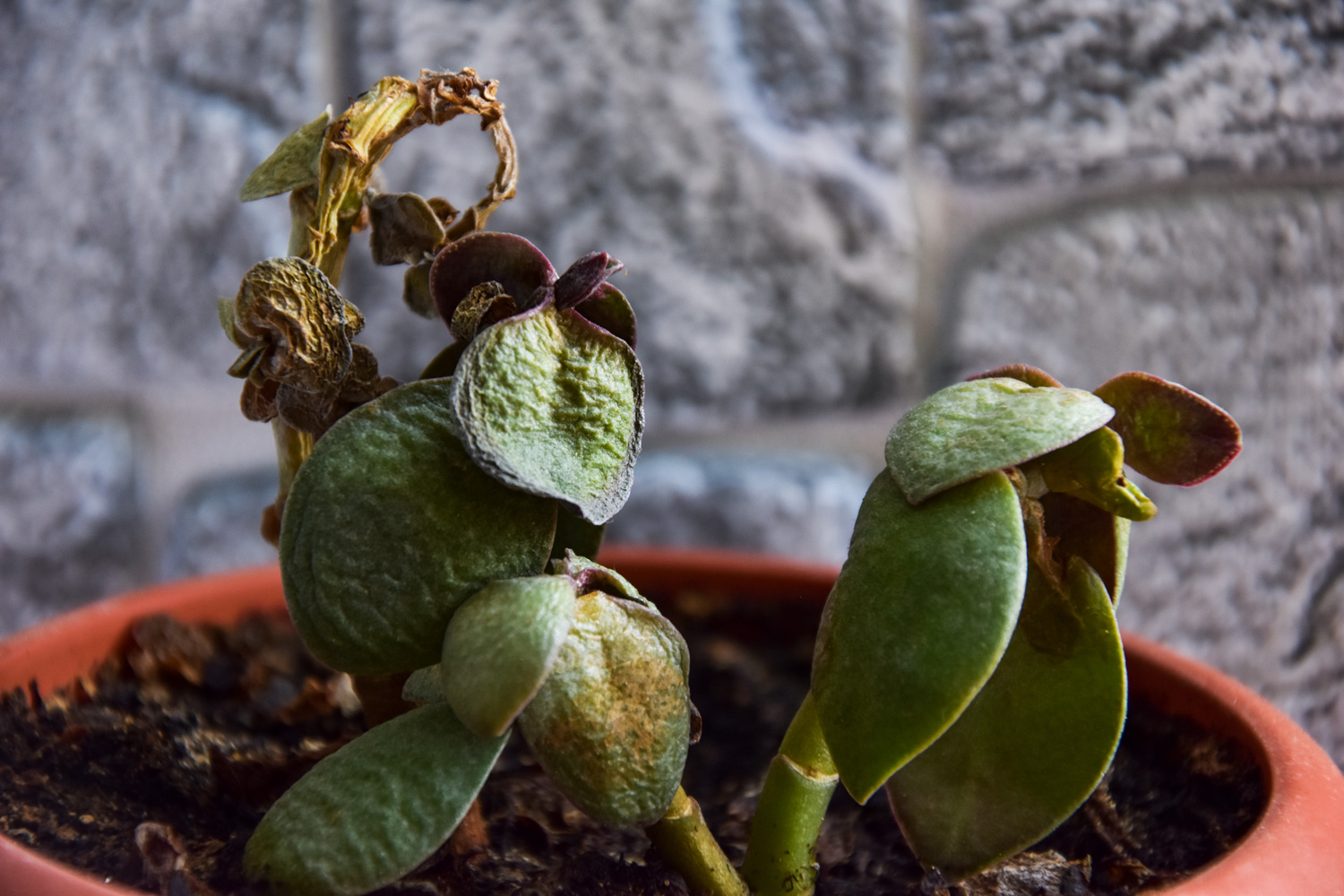
Yellowing of the foliage is a sure sign of overwatering, while browning of the edges or tips and wrinkling of the leaves, is an indication of underwatering.
Root Decay
Jade plants often wilt and die if allowed to sit on wet soggy soil for long periods. Root decay is often a result of overwatering. This situation calls for major concern. Since rotting manifests under the soil, you will only notice it during the later stages. At this point, reviving the plant is quite difficult, but it is still possible.
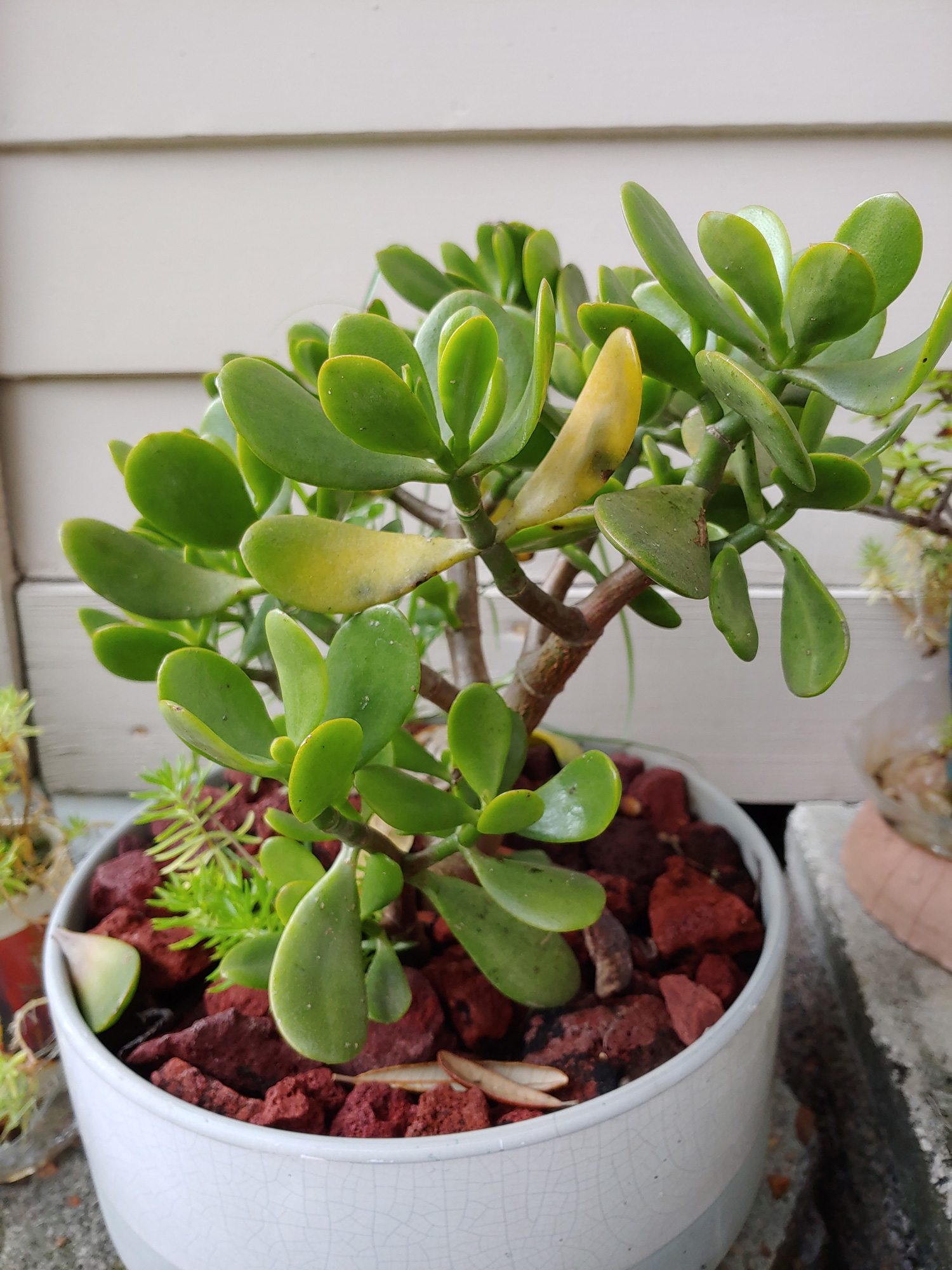
Yellowing leaves and delicate stems are the symptoms of root decay. If you inspect the roots, a brownish or blackish slime is present and noticeable. Immediately wash the grime away, and cut the infected roots to prevent the spread of fungi.
Inadequate Sunlight Exposure
Jade plants need enough sunlight exposure. Stunted growth, leaf discoloration, curling, and dropping of the leaves are signs that your plant is receiving inadequate light.
Freezing Temperatures
Since jade plants are native of South Africa, most species prefer warm climates. Although they can naturally adapt to cooler weather, exposure to freezing temperatures will result in wilting and dying.
Overfertilizing
Succulents do not have high nutrient requirements because they are considered slow-growing plants.
If your jade is already established, avoid using fertilizers with high nitrogen content because any excess of this element may cause the leaves to wilt, and your plant to eventually die.
Pests Infestation
Mealybugs are the most common pests that attack or infect jade plants. They are white cottony insects that form patches on the underside of foliage and stems.
Their mandibles pierce through the leaves' tissues and feed on the plant's sap.
Jade plants are sensitive to some pesticides. You may spray 70% isopropyl alcohol directly onto the visible bugs. The chemical will evaporate quickly, leaving water behind, making it a safe alternative to insecticides.
How To Revive Dying Jade: Care And Maintenance
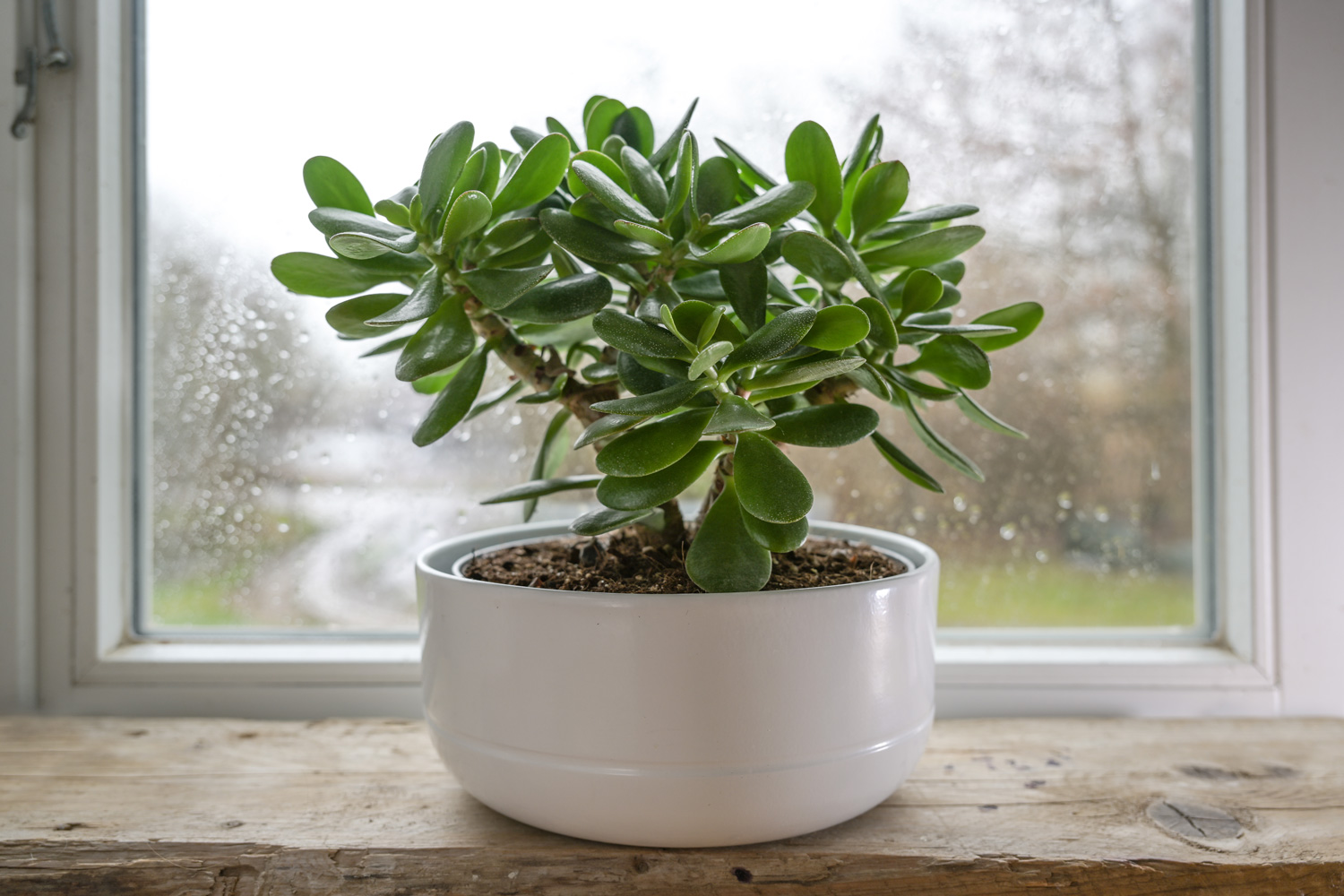
Watering Requirements
Jade is a succulent that stores water in its leaves. The foliage contains a thick waxy layer called a cuticle which functions as a barrier that safeguards the soft water repository inside the leaves. Although this is the case, the plant can only store fluids for at least 3 weeks to a month or so.
This succulent cannot tolerate longer months of drought, however, they would not grow well when the soil is constantly moist or damp. The general rule is to let the soil dry out before thoroughly hydrating the plant.
This means the soil should be watered deeply and thoroughly, not just the surface. The frequency of watering may vary depending on the size, the soil, and the overall needs of your existing jade.
Apart from this, hydrating requirements vary during frigid conditions and long dry spells. It will need the most water at the start of the growing season, specifically the spring and summer months.
The plant recedes into its inactive phase at the beginning of fall and throughout winter which means they do not require much watering during this period.
Repot the plant or replace the soil once you encounter overwatering and root decay. This will help replenish the overall health of your jade.
Light
Jade plants should get at least 6 hours of sunlight exposure per day. Young varieties must be placed in an area where they can receive enough indirect light. On one hand, some established plants (depending on the species), can handle more direct sunlight.
Other varieties should be placed in partial shade. The foliage will have a deep green pigment, as opposed to those that receive direct sun. Indoors, they thrive well beside a window or in spaces where light is not limited.
Soil And Fertilizing
Arid regions are jades’ natural habitat. Because succulents cannot tolerate sitting on a wet potting mix, always use a well-drained soil. This also prevents eventual root decay. You may add cactus mix, some organic elements such as peat moss, and inorganic materials like granite or clay to the pot.
Fertilizers contain the macro - Nitrogen, Phosphorus, Potassium (N-P-K), and micronutrients that plant needs. While this is the case, Jade plants do not require high levels of nutrients because, like most succulents, it does not grow quickly.
It should be fertilized infrequently, once every three to four months should do the trick. Never apply the fertilizer directly to the plant, use a diluted liquid fertilizer with a ratio of 10-20-10.
Temperature
The temperature has a significant effect on jade plants, particularly because they cannot tolerate a freezing climate. Indoors, these plants thrive best in temperatures ranging from 65 degrees to 75 degrees Fahrenheit.
Jade plants can be grown outdoors as long as the area has a generally mild dry climate throughout the year. They are susceptible to wilting and dying when exposed to freezing or cooler temperatures of winter.
In this case, it is best to grow them indoors, away from cold windows and gusty areas, especially when it reaches below 50 degrees Fahrenheit.
What Are The Benefits Of Jade?
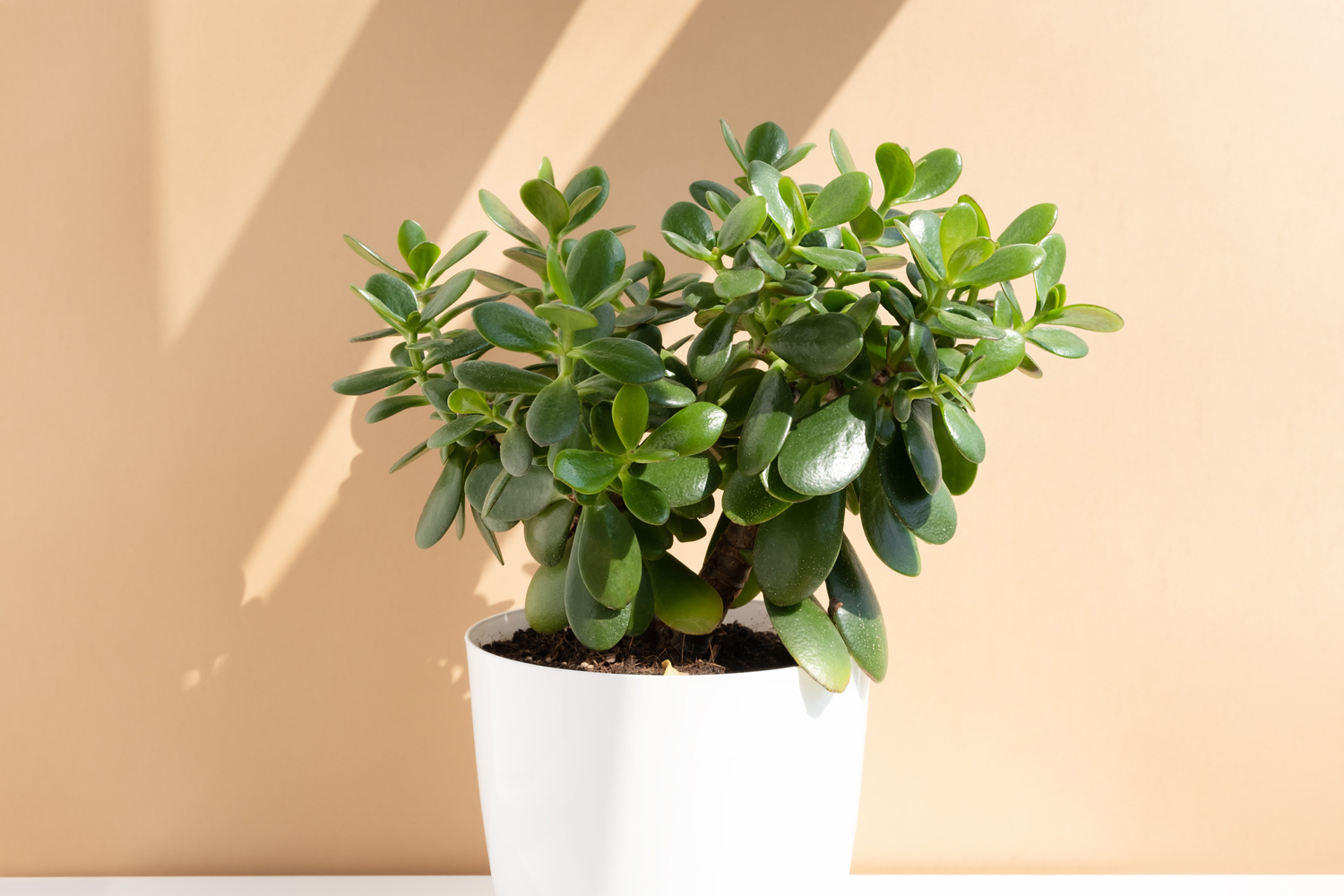
Apart from its features that provide an attractive house and garden plant, easy to maintain and propagate, jade has several properties that are beneficial to human health and the environment.
Similar to aloe vera, jade leaf extracts are used for treating wounds, skin inflammation, and itching or rashes. In traditional Chinese medicine, jade is consumed in tea form and is effective in lowering blood sugar among diabetics.
Volatile organic compounds or VOCs are fumes or emissions from paints, wood preservatives, and insecticides. High levels may cause respiratory problems, especially in children. The jade plant is effective in removing residual VOCs.
Carbon dioxide which is also toxic to humans is absorbed by the plant during nighttime, thereby improving the indoor air quality. It is best to have several potted jade plants around your home to maximize its benefit.
Extreme weather can cause dry air and low humidity. Crassulacean Acid Metabolism or CAM is a process wherein a plant's stomata remain closed during the daytime but open at night to diffuse moisture and absorb airborne chemicals. CAM allows the jade plant to increase the humidity while lowering toxic air content.
In Closing
For your jade to thrive, remember to properly water the plant, provide adequate sunlight, and place them in areas with mid-range temperatures. We hope this article proved to help guide you towards reviving and caring for your plant. Happy gardening!
